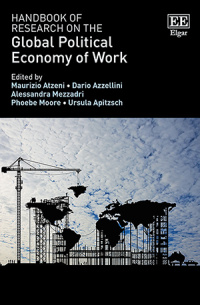Working conditions and economic trends in the maritime sector often only refer to seafarers on board merchant ships and dockworkers. This conventional view is no longer appropriate in the face of recent and long-term trends in the maritime economy. To understand what the political economy of maritime labour is, we must first take an integrated, overall view to define the field, including industries like fishery, off-shore-wind-energy or ship-building and ship wrecking, just to mention some.
 The article discusses what a meaningful description of the maritime-industrial-logistic complex could be and outlines some of its key structural features and trends. How many employees work “around shipping,” in which fields of activity and under which working conditions? How does the recruitment of maritime personnel work today? It provides an overview of the major global players among shipping companies, crewing agencies, port operators and shipyards. The long-term trends in the global labour market for seafarers, the global downward spiral in wages and working conditions triggered by the system of ”flags of convenience“ are portrayed, but also the partially successful efforts of the International Transport Workers‘ Federation and national trade unions to stop and maybe reverse the ”race to the bottom.”
The article discusses what a meaningful description of the maritime-industrial-logistic complex could be and outlines some of its key structural features and trends. How many employees work “around shipping,” in which fields of activity and under which working conditions? How does the recruitment of maritime personnel work today? It provides an overview of the major global players among shipping companies, crewing agencies, port operators and shipyards. The long-term trends in the global labour market for seafarers, the global downward spiral in wages and working conditions triggered by the system of ”flags of convenience“ are portrayed, but also the partially successful efforts of the International Transport Workers‘ Federation and national trade unions to stop and maybe reverse the ”race to the bottom.”
https://www.e-elgar.com/shop/gbp/handbook-of-research-on-the-global-political-economy-of-work-9781839106576.html
